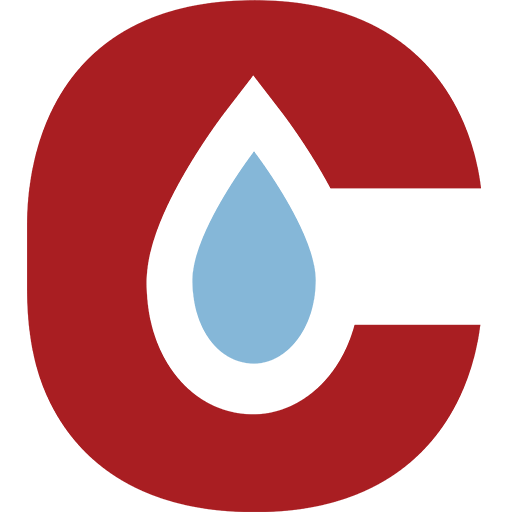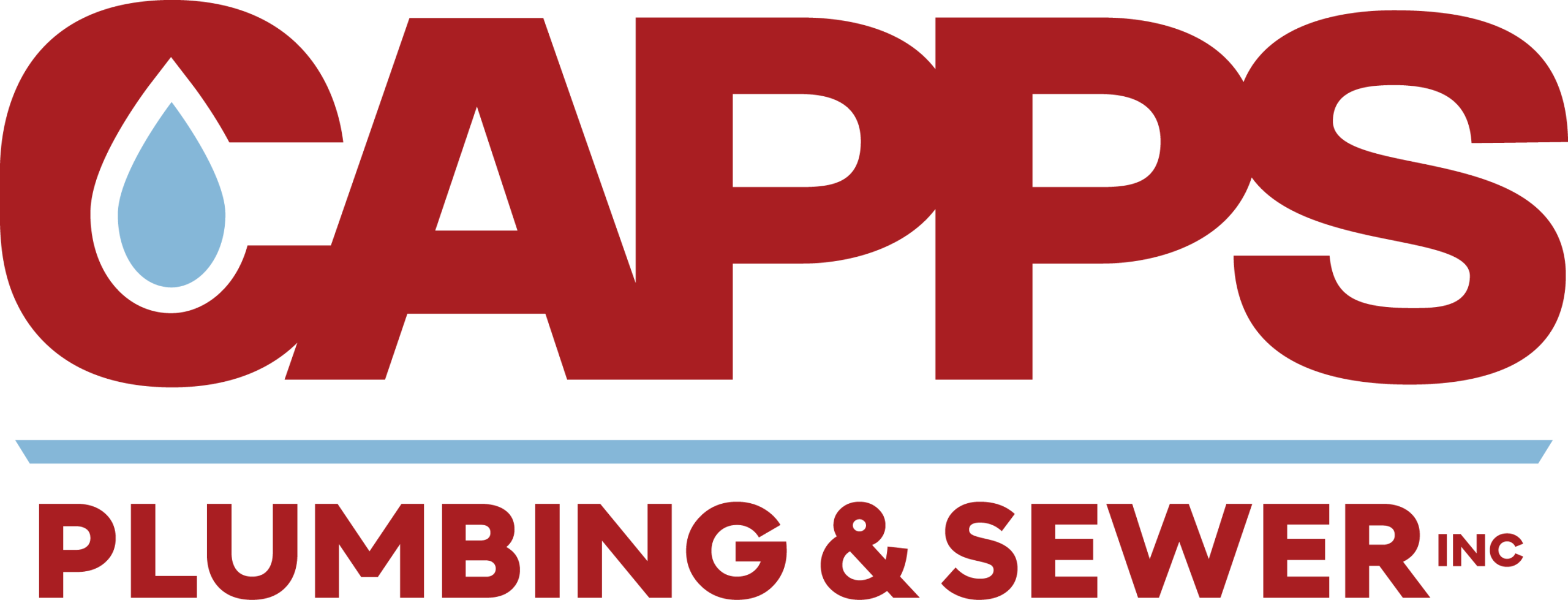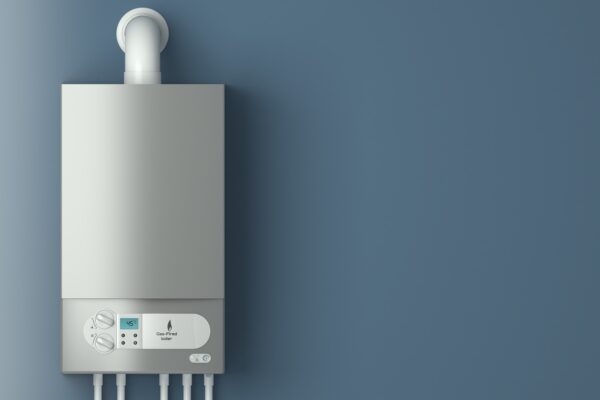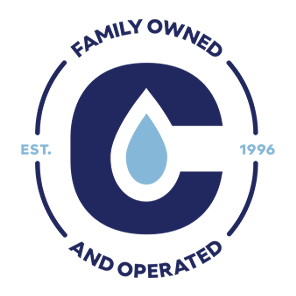The major purpose of all boilers is to transfer heat into the water. These systems essentially heat the water itself or produce steam that can then be used to warm up the home or business. Some combination systems can even produce both home heating and hot water. The specifics of how your boiler works depend on the type of system you own. These systems have been used for centuries to provide reliable and cost-efficient heating. Thanks to modern upgrades, many models are even more efficient than standard furnaces. Keep reading to learn more about how your boiler heats your home.
General Boiler Process
Just like with furnaces or heat pumps, the first step in the heating process is your thermostat registering a drop in temperature. It will then instruct your boiler to turn on and start heating the water. These steel systems are often powered by gas, electricity or oil.
Depending on your specific boiler, it may convert the water into steam or send it in its liquid form through your pipes to your radiators. These systems rely on circulation to bring the water back to the boiler once it’s cooled off so it can be heated again. This process repeats until the home reaches the thermostat’s designated temperature.
Boilers are relatively simple yet amazingly efficient systems that are popular with both residences and commercial businesses. They’re often paired with radiators or radiant floor heating.
Common Boiler Components
Boiler systems are made up of a variety of parts that serve to both heat the water and deliver it. Since these systems can use volatile fuels like natural gas and oil, they also come with helpful safety features that activate in times of emergency. Knowing the names of these components can help you better understand your boiler’s processes and make it easier to communicate your maintenance needs.
Aquastats keep the system’s water temperature within a certain range. During the heating process, the boiler’s expansion tank will safely absorb the increasing temperature and pressure. Safety relief valves will open to let water out if the pressure reaches a dangerous level. If the boiler doesn’t have access to enough water, it may turn to the fuel shutoff valve to prevent any dangerous carbon monoxide leaks.
All of these parts and more are constantly working together to provide your home with safe and reliable heat. It’s important to schedule routine service for both your boiler and its venting system regularly to keep your home safe.
Different Types
Boilers are classified into many different categories, including fuel type, heating method, form of heating and overall size and ability. Choosing the best boiler for your home can often be a complicated process if you need clarification on what each classification means. Here are the most common distinctions and their pros and cons.
Fuel Type
As mentioned before, boilers need either gas, oil or electricity to heat the water. Gas boilers have a traditional pilot light or electric start function that ignites the natural gas and oxygen. In this system, the secure combustion chamber holds the gas as it burns and creates heat. That warmth then travels through a web of copper pipes called the heat exchanger to heat the water. This is the most popular type of boiler available as it’s relatively inexpensive to install and operate.
Oil boilers work essentially the same way as gas boilers. The oil is burned in the combustion chamber before it’s sent to the heat exchanger. The main difference between them is that oil boilers need a storage tank for their fuel. You’ll need to order your fuel from a local supplier and store it in the tank. If you run out, you may be stuck without both central heating and hot water. Oil systems aren’t as environmentally friendly as those that use natural gas, but some models are more energy efficient. While oil and gas prices fluctuate frequently, oil tends to be the more expensive option.
If you don’t have access to natural gas, you may opt for an electric boiler. Instead of igniting fuel, they instead use electricity to power their heating elements. These coils then directly transfer the heat to the water. Electric systems are known to burn cleaner than oil or gas boilers, which can lower your home’s carbon output. However, they’re also not as efficient and can cost more in utilities each month.
Heat-Only or Combination Systems
While traditional boilers only deliver central heating, newer models can also work as water heaters. The two types of combination boilers are indirect systems and tankless coil systems.
A tankless coil system utilizes the heat exchanger to provide hot water on demand. This means that whenever you turn on the faucet, the boiler will kick on and heat the water with its heat exchanger. These are incredibly efficient during the colder season because they’re piggybacking off the central heating process. Unfortunately, tankless coil systems can guzzle through fuel in the summer when you no longer need home heating.
While indirect systems also need the heat exchanger, they’ll actually store their warm water in a tank until it’s needed. Just like a traditional water heater, these systems keep the water hot so it’s constantly available. Indirect systems are more energy efficient at heating water than tankless coil systems. Their overall usefulness, however, depends on your local climate and your regular boiler usage.
Form of Heating
No matter what type of fuel your boiler uses, it will only heat your home either with hot water or steam. Hot water boilers don’t need to bring the water to boiling temperatures. In reality, the water is heated up to between 140 and 180 degrees Fahrenheit before being sent into the pipes. An electrical pump ensures the water travels to every room.
Steam boilers heat water until it boils and produces steam. This hot vapor is then distributed to your radiant floor system or radiators. Steam boilers cost more every month because it takes more energy to boil water than it does to simply heat it. On the other hand, since the steam is naturally pressurized, it doesn’t need an additional pump or circulatory system to transport it around the house.
Wheeling Full-Service Plumbing Team
Since 1996, Capps Plumbing & Sewer has been providing premium plumbing services to families in Wheeling, IL and the surrounding areas. Our locally-owned business always seeks to deliver personal and friendly service and customer care. We strive to arrive as quickly as possible and even offer 24/7 emergency repair service. Our highly skilled and experienced plumbers are constantly receiving updated training, so they’re always at their best. Let us service your water heater, repair your pipes or check for gas leaks. We’re ready to handle any kitchen, bathroom or laundry room plumbing issue. Don’t forget to keep us in mind if you’re in need of a drain cleaning or main water line inspection. Call Capps Plumbing & Sewer in Wheeling today to learn more about our superior same-day plumbing services.




